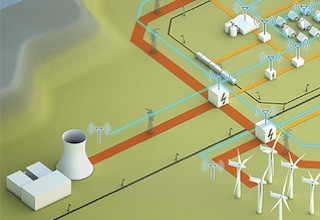While writing a story on the state of the smart grid in the U.S. (you can read the story here), a few things occurred to me. One is that the so-called smart grid is not a new development but rather one that has been on-going for several decades. Another thing I learned was that there are already a good number of products and services aimed at smart grid applications. For instance, devices such as smart meters have been around for many years, which means that the technology is not necessarily new. 
I also learned how piecemeal the efforts at a complete smart grid have been to date. True, the Energy Independence and Security Act of 2007 (or EISA) represents the U.S. government’s mandate to modernize the nation’s electrical grid. And yet it seems that what is lacking is a sense of urgency.
Pundits and advocates have been making the case that implementing smart grid technology has all manner of benefits, from improving our national security to increasing the reliability of the grid itself, to more easily and readily integrating new sources of alternative energy onto the existing grid. (In fact, Stanford engineering professor Ram Rajagopal argues that a smart grid is necessary in order to successfully integrate alternative energy sources like solar and wind into the electrical grid.)
Other benefits touted include empowering consumers by allowing them to sell power to the grid rather than solely being charged for the power they use as well as giving consumers more control over their energy usage.
Clearly, if this is going to be a nationwide effort, and if national security is invoked (especially making the grid secure from vulnerabilities such as intrusions from hackers, terrorists, or even foreign governments), then there needs to be more support and direction either from the federal government and regulatory agencies or some other national agency or utility organization to sustain the effort and see it through to the end.
From a broader industry perspective, the seeds are already in place. A convergence of several technology trends seems almost inevitable; the smart grid build out, the emphasis on energy efficiency in operations, and the emerging Internet of things (IoT). For manufacturing, implementing smart grid technology can help manufacturers in one of the most important ways; decreasing energy usage, or increasing energy efficiency, and thereby curbing costs. A NEMA white paper even spells out the ROI for the smart grid, making the case for both utility companies as well as consumers of electricity.
There is obviously an added benefit in the jobs created for installers, engineers, technicians, as well as the companies manufacturing the components, devices, and software intelligence for building the new smart grid.
Looks like a win-win no matter how you look at it.


Leave a Reply
You must be logged in to post a comment.